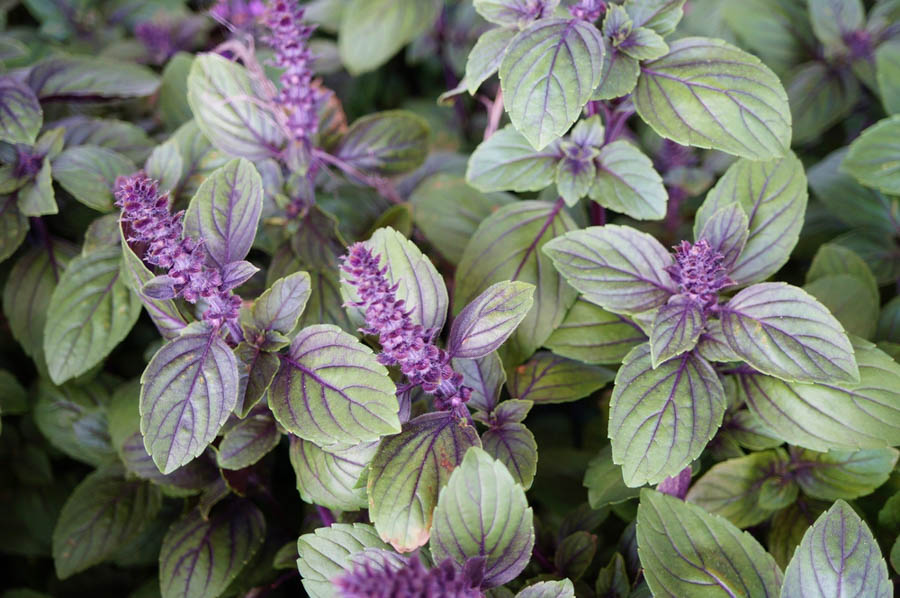African Blue Basil: An Excellent Addition to Your Landscape

African Blue Basil is both an excellent source of garden color and an excellent plant for attracting an array of beneficial insects. Its green leaves transition to dark purple and its stems sprout long lavender blossoms. Gardeners can cut several stems to make a lovely small bouquet.
Getting Started.
African Blue Basil (Ocimum kilimandscharicum x basicilum “Dark Opal’) is a hybrid, a cross between basil and dark basil. Importantly, African Blue Basil is a steril hybrid anda perennial propagated by cutting. It cannot be grown from seed. Purchasing this basil generally requires a trip to the local garden center rather than a search of on line seed companies.
Use as a Herb.
Unlike most basils, African Blue Basil is not typically grown for its use in cooking. It has a strong camphor (clove) scent compared to other traditional basils; as a result, most cooks prefer to grow the more traditional Italian Genovese Basil for cooking. And please don’t confuse it with Thai Basil: Thai Basil has brighter, narrower green leaves and shorter, purple flowers along with a strong anise flavor best reserved for use in Thai cuisine.
African Blue Basil
Microclimate.
Like most basils, African Blue Basil can be grown in mild winter areas of California. In California’s cooler coastal areas, it grows well in full sun; gardeners in California’s warmer inland valleys will be more successful growing it in partial shade, or at least protected from late afternoon sun.
Soil Requirements.
Plant African Blue Basil in rich, living soil with sufficient organic matter. GardenZeus recommends adding nitrogen once during the growing season in the form of a cup of chicken manure diluted in 4 gallons of water (half cup if fresh manure) and mixed thoroughly, applied as a soil drench. GardenZeus also recommends mulching basil. Use a quarter to half-inch fine mulch for small starts under four inches in height; increase to an inch or more of fine to medium mulch after plants are 1 to 2 feet tall.
Maintenance.
Gardeners typically grow basils to harvest the leaves for use in cooking; to encourage the growth of leaves, they typically pinch off newly formed basil flowers. However, because African Blue Basil is grown for its attractive lavender blossoms as well as its colorful foliage, gardeners should refrain from removing the beautiful blooms. As a perennial plant, it is known to grow “bushier” and larger (up to 4 feet or more) than traditional Italian basils. Like other basils, it does not dry well.
Pinching traditional basil to promote leaf growth
Watering.
Water regularly, but do not over-water. Soak soil thoroughly, and then allow soil to dry down but not completely between waterings. Basil may hail from the Mediterranean, but it is not as drought tolerant as other Mediterranean herbs, such as rosemary, sage and thyme. As a perennial plant, African Blue Basil will generally require slightly less watering than other annual basil plants.
Uses in a Sustainable Garden.
Even if African Blue Basil were not such an attractive garden plant, it would be worth growing for its ability to attract beneficial insects such as honeybees, native bees, syrphid (hover) flies and lady beetles.
Like other basils, it makes an excellent container plant.
GardenZeus has customized growing information for your area. To get started, enter your zip code here.
5 Tips for Growing Basil in Containers
3 Tips for Growing Basil in the Summer Home Garden
Constructing a Mediterranean Herb Garden


